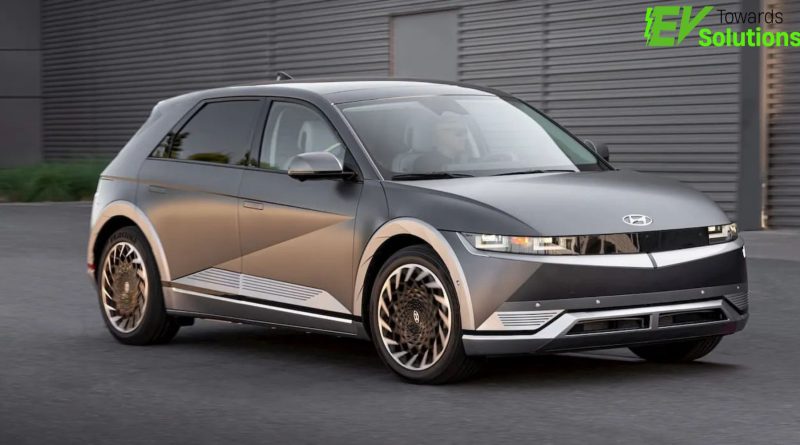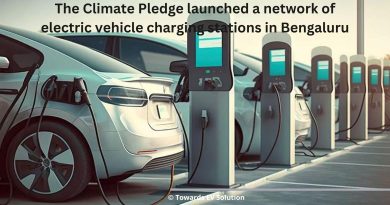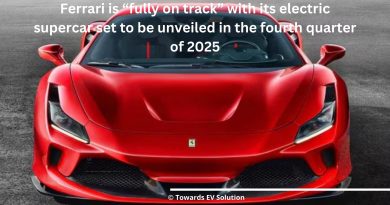Hyundai Targets Affordable EV Market with Launch of Ioniq 2 by 2025
Hyundai is set to unleash its Ioniq 2 which is a compact car that is aimed at the affordable market this will be due to a future prediction of growth in the market for compact electric cars. Taking shape for introduction in the first quarter of the year 2025, the Ioniq 2 is priced below $30000 making it one of the cheapest long-range electric vehicles available in the crucial global markets.
Electric Vehicle Charging Market Size
According to Precedence Research’s report on the luxury electric vehicles market size accounted for USD 223.05 billion in 2024 and is predicted to increase from USD 263.25 billion in 2025 to approximately USD 839.57 billion by 2032. The sector is registering a double-digit CAGR of 29.1% during the forecast period.
Key Highlights of the Ioniq 2
- Affordable Pricing: Hyundai aims to make electric vehicles accessible to a broader audience, with a focus on urban mobility and cost-conscious consumers.
- Long Range: The Ioniq 2 will feature a 250-mile range, positioning it as a strong competitor in the entry-level EV market.
- Modular Design: Built on the e-GMP platform, the Ioniq 2 will offer a variety of modular features, allowing buyers to customize their vehicle with optional battery upgrades and digital technologies.
Affordable Electric Vehicle Market Growth
The launch of the Ioniq 2 coincides with increasing demand for affordable electric vehicles. The cross-sectional study conducted by the International Council on Clean Transportation (ICCT) has predicted that sales of electric vehicles, which cost less than $30, 000 tripling by 2027, and the sales figures are expected to touch 7 million units annually.
Global Affordable Electric Vehicle Sales Projections (2024–2027)
| Year | Affordable EV Sales (Million Units) | Annual Growth Rate (%) |
| 2024 | 1.5 | — |
| 2025 | 3.0 | 100.0 |
| 2027 | 7.0 | 133.3 |
Hyundai’s Electric Vehicle Strategy
Hyundai is committed to being a major player in the mass-market EV segment. In 2023, Hyundai sold 560,000 electric vehicles, making it the fourth-largest EV manufacturer globally. The Ioniq 2 is expected to drive this number even higher, helping Hyundai achieve its goal of 1 million EV sales annually by 2030.
- Battery Production Partnerships: Hyundai is working with LG Energy Solution to produce high-density lithium-ion batteries, ensuring a steady supply for its growing EV lineup.
- Focus on Sustainability: Hyundai has committed to using recycled materials in the production of the Ioniq 2, including eco-friendly upholstery and recyclable plastics, in line with its broader goal to achieve carbon neutrality by 2045.
Thus, an important trend is observed in attempts made by governments to reduce the cost of electric vehicles. Now in Europe, EV incentives are being under discussion to broaden their coverage to include more price categories, including lower-income ones, while in China, local electric car manufacturers enjoy large subsidies.
| Region | Subsidy for Affordable EVs (USD) | Market Focus |
| European Union | $4,500 | Incentives for low-income buyers |
| China | $5,000 | Locally-produced affordable EVs |
| United States | $7,500 | EVs under $35,000 |
The Ioniq 2 is designed to be affordable, that means Hyundai dominates the cheap EV segment. The company forecasts that by 2025, 20% of its electric vehicles comprise this simple model as it progressively expands its sales to popularize EVs throughout the world.
Meet Mahima, a voice you’ll want to follow in the electric vehicle (EV) industry. With a rich background in journalism and mass media, Mahima doesn’t just report the facts; she tells the story behind the revolution. Her expertise of over four years in writing positions her uniquely as someone who knows how to engage, inform, and inspire her audience. Whether she’s diving into the latest EV technologies or exploring the future of sustainable mobility, Mahima delivers insights that go beyond the surface, making her work a must-read for enthusiasts, professionals, and curious readers alike.
In every article, blog, or feature, she brings a human touch to the world of electric vehicles. She weaves narratives that highlight how the shift toward electrification is transforming economies, reshaping consumer preferences, and pushing the boundaries of innovation. Her sharp analytical skills allow her to see connections others might miss, offering fresh perspectives on trends that are shaping the automotive landscape.




